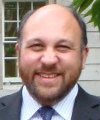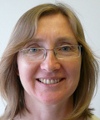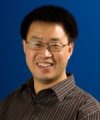Cost: £1,500
Book a place
Overview
This short course will give you an in-depth understanding of the design, fabrication, operation and performance of advanced photonic devices for a variety of applications, including optical-fibre communications and solar power generation.
It covers materials and devices and examines how ingenious device design can overcome shortcomings in the materials, devices or their application.
It's run by UCL's Department of Electronic and Electrical Engineering.
Course content
The following topics will be covered during the course:
- Crystals
- The electronic behaviour of semiconductor materials
- Principle of generation of light and its detection
- Quantum wells and quantum dots
- Semiconductor growth by molecular beam epitaxy (MBE)
- Light emitting diodes (LEDs)
- Coupling of LEDs and lasers to optical fibres
- Principle of operation of a laser
- The design of a variety of semiconductor lasers
- Waveguide modes
- The spectrum of light emitted by a laser
- Modulation of laser (coherent) light
- Laser noise and its effect on the signal to noise ratio
- A variety of photodetectors
- Liquid crystal photonic devices
Who this course is for
The department's short courses/CPD modules are aimed at those working in the telecommunications industry such as researchers, engineers, IT professionals and managers.
They're particularly suited to graduates in electronic and electrical engineering, communications engineering and computer science who want to further their knowledge on a particular topic, or work towards a Master's degree.
You don't need to have any pre-requisite qualifications to take this course.
Dates, assessment and certificates
Classes will be held from 2pm to 6pm on Wednesdays, for eight weeks.
Teaching will take place in person with some materials available online.
The course is assessed by exam.
If you complete the course but not the exam, you'll receive a certificate of attendance.
If you take and pass the exam you'll get a certificate stating this, which includes your pass level.
Benefits of our Electronics and Engineering CPD courses
You can take this course as a standalone (one-off) course/module, or accumulate it towards an MSc qualification (up to two standalone modules can be transferred towards the flexible MSc degree).
Benefits to employees
The programme offers the opportunity for professional people working in the telecommunications industry to develop their career, be able to respond to changes in their environment, and learn while they earn. It's also designed to give you the opportunity of working towards an MSc qualification from an academic institution whose quality is recognised world-wide.
Benefits to employers
Our flexible CPD courses enhance staff motivation and assists in the recruitment and retention of high-quality staff. It enables your company to keep ahead of the competition by tapping into world-leading research, and to profit from UCL's world class Telecommunications and Business expertise.
View the full range of related courses available.
Learning outcomes
On completion of this course, you should:
- have a thorough and detailed understanding of LEDs and be confident in making full use of them in a wide range of applications
- be familiar with a range of different types of LED and their performance and be able to select the best one for a particular application
- understand the coupling efficiency of an LED and a laser to an optical fibre
- be familiar with a wide range of different types of laser and their performance and limitations and be able to select the best one for a particular application
- generate an innovative design of laser for a new system or application, and ensure it meets the required specifications by using the optimisation methods taught in this course
- have a deep understanding of coherent optic (laser light) behaviour which will enable you to design lens based and optical fibre systems
- be able to teach such a course yourself
- feel excited and motivated to want to do research or design in the area of advanced optical devices
- be able to specify the requirements for an optical device based on the application for which it is to be used
- understand the principles of semiconductor growth, operation and fabrication of optical devices
- be able to use logical reasoning to explain device behaviour together with detailed structural diagrams of devices
Course team

Dr David Selviah (Module Manager)
David studied at Trinity College, Cambridge University and Christchurch, Oxford University gaining his Master's in Theoretical Physics and PhD in Photonic Engineering. He designed, fabricated in a clean room and characterised novel RF devices for pulse compression radar and secure communications at the industrial company Plessey (now Oclaro). He's a Reader in Optical Devices, Interconnects, Algorithms and Systems with over 250 publications and represents the UK on international standards committees. His research includes design of novel distributed feedback lasers integrated with silicon photonics for data centre multi-terabit switches, 3D light detection and ranging, LIDAR, data processing on parallel cloud computer clusters, signal processing, image processing and pattern recognition.

Dr Sally Day
After studying for DPhil at the Clarendon Laboratory, Oxford University Sally started working in the field of liquid crystal devices and applications, initially at Thorn EMI then at the then RSRE, Malvern (now Qinetiq). In 1992 she was awarded a Royal Society University Research Fellowship to work at UCL, where she is now Senior Lecturer with around 80 publications. Her work at RSRE covered improvements in liquid crystal display devices as well as non-linear optical applications of liquid crystal materials. At UCL, in the Optical Devices and Systems laboratory in the Photonics group, she has been concerned with the use of liquid crystals in tunable microlenses and wavelength selective Fabry Perot filters. More recently she has been concerned with the application of modelling software developed by the Computer Modelling Research Team of Dr Anibal Fernadez, which can simulate the performance of liquid crystal devices in 3D. Her work on liquid crystal displays has covered design of liquid crystal on silicon devices, cholesteric polarisers, large area displays for architectural applications and more recently the use of liquid crystals in microwave devices and the optical design of an auto-stereoscopic display. In 2008 she was awarded the Cyril Hilsum Medal by the British Liquid Crystal Society and she is currently the UK Director for the Society for Information Display.

Prof Huiyun Liu
Huiyun received his PhD in Semiconductor Science from the Institute of Semiconductor, Chinese Academy of Sciences. He joined the EPSRC National Centre for III-V Technologies at University of Sheffield in August 2001. He was responsible for the development of molecular beam epitaxy growth of semiconductor materials for the UK academic and industrial research community. In 2007 he was awarded Royal Society University Research Fellow and started his academic career in the Department of Electronic and Electrical Engineering at UCL as a Senior Lecturer. In 2012 he was promoted as Chair of Semiconductor Photonics. His interests include the nanometre-scale engineering of low-dimensional semiconductor structures (such as quantum dots, quantum wires, and quantum wells) by using molecular beam epitaxy and the development of novel optoelectronic devices including lasers, detectors, and modulators by developing novel device process techniques. He's co-authored over 120 peer-reviewed journal papers in the area of semiconductor materials and devices.
Book a place
Course information last modified: 22 Sep 2023, 23:21
 Close
Close

